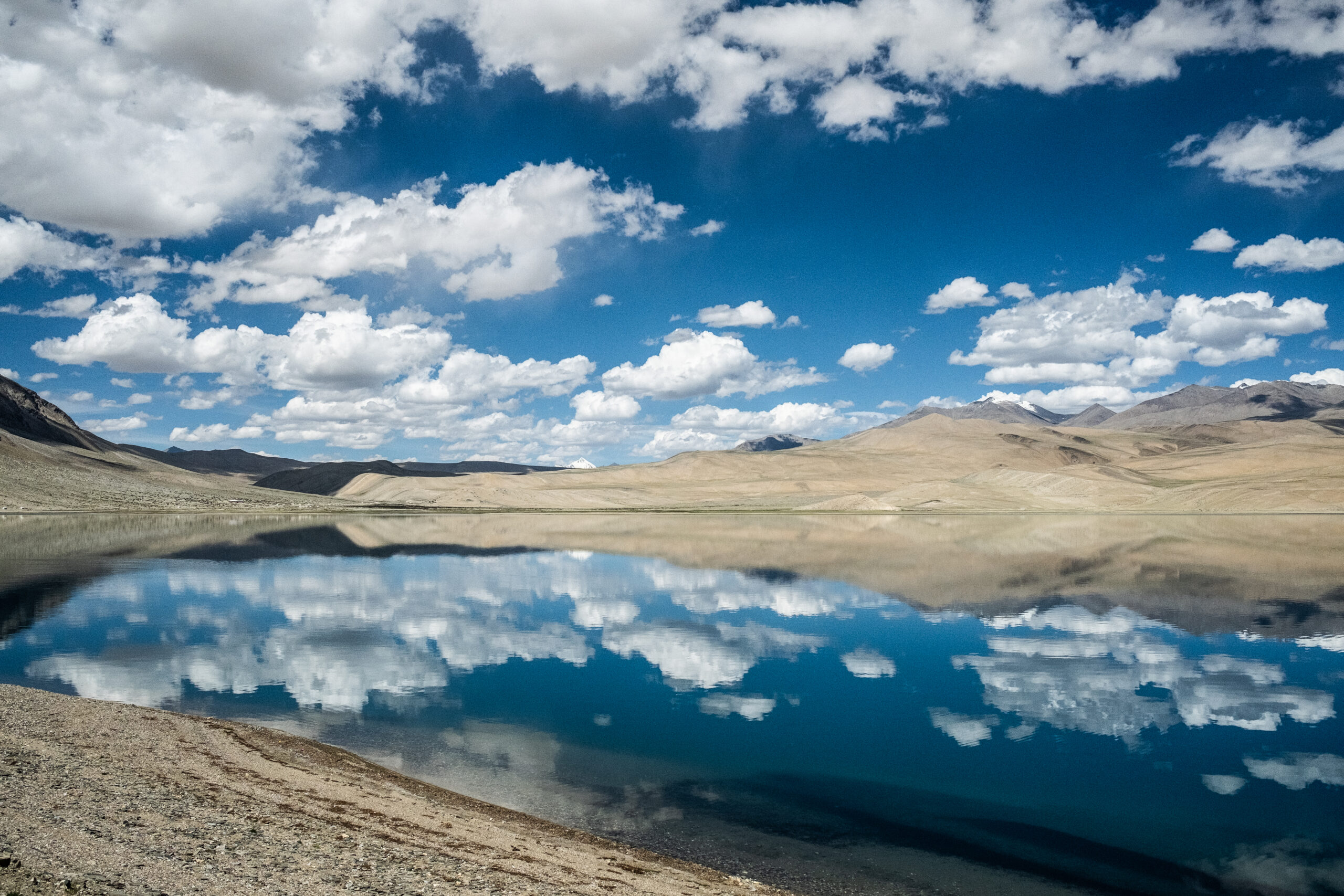
Some of the best pashmina produced in Ladakh comes from Korzok village in the Rupshu valley in Changthang. This pashmina is highly sought after as it is extremely fine and soft and is perfect for making lovely pashmina shawls stoles and scarves.

The village is about 220 kilometers from Leh and, at an altitude of about 15000 feet, it is the highest permanent settlement in India. It is situated on the bank of Tso Moriri lake, which is considered holy and sacred by the Changpas. The village is also known for its 300 years old Drukpa Korzok monastery.

Korzok has always been an important village in Ladakh as it was on the Central Asia trade route for centuries until trade stopped in the 1950s.

Most of the people living in Korzok are Changpa nomads who are agro-pastoralists, moving between summer and winter pastures. They keep pashmina goats, sheep and yak. According to the nomads I spoke to, there are about 200 families living in Korzok. In addition to keeping livestock, they also practise limited agriculture, growing mostly barley on small patches of land.

The grazing ground where the Korzok nomads keep their goats and other livestock is called Korzok Phu. It is a large meadow about 3 kilometers from the village and is a beautiful site with thousands of sheep , goats and yaks grazing, with rugged mountains in the background.

It looks as if things have not changed much in Korzok Phu for centuries. However, a closer look reveals that the Changpas are undergoing important changes in their life-style. In the past Changpas of Korzok Phu (and other nomadic pastures) lived in traditional tents (Rebos) made with yak hair. Then, about ten years ago, Rebos began to be replaced by modern light weight tents. When I visited Korzok in August 2023, I could see only two traditional tents-others had been replaced by government supplied light weight tents made with synthetic material. They prefer the new tents as they are easy to pack and transport, but not as warm as a Rebo. The government has also built a number of pre-fab cottages and many Changpas now live in these.

Pashmina goats are the most valuable livestock of Korzok and other Changpas. Their importance increased during the last decade because of an increase in demand and rise in the prices of raw pashmina. In spite of the increase in the price the Changpas find it inadequate to support their families.

According to the Changpas I met in Korzok, most families have between 150 and 200 pashmina goats. One goat produces between 150 and 200 grams of raw pashmina in a year, and this amounts to a maximum of 40 kilograms of pashmina. The average price of raw pashmina in 2023 was about Rs. 4000 per kilogram, providing a maximum annual income of Rs. 1.6 lakh for a family. This was clearly not sufficient. To supplement income, many Changpas in Korzok (and other villages in Ladakh) work as labourers. Many have migrated to Leh or other cities outside Ladakh.
This trend is likely to continue. According to Korzok Changpas, they need at least 500 goats to produce enough pashmina to support their families. Those with smaller flocks are likely to sell their goats to those with larger flocks, and migrate to cities.
This trend may have a serious effect on the number of pashmina goats and production of pashmina in Changthang. As more Changpas leave for towns the production of pashmina may be insufficient to meet the large demand . This is likely to lead to a large increase in prices and greater dependence on pashmina imported from Mongolia and other countries.


